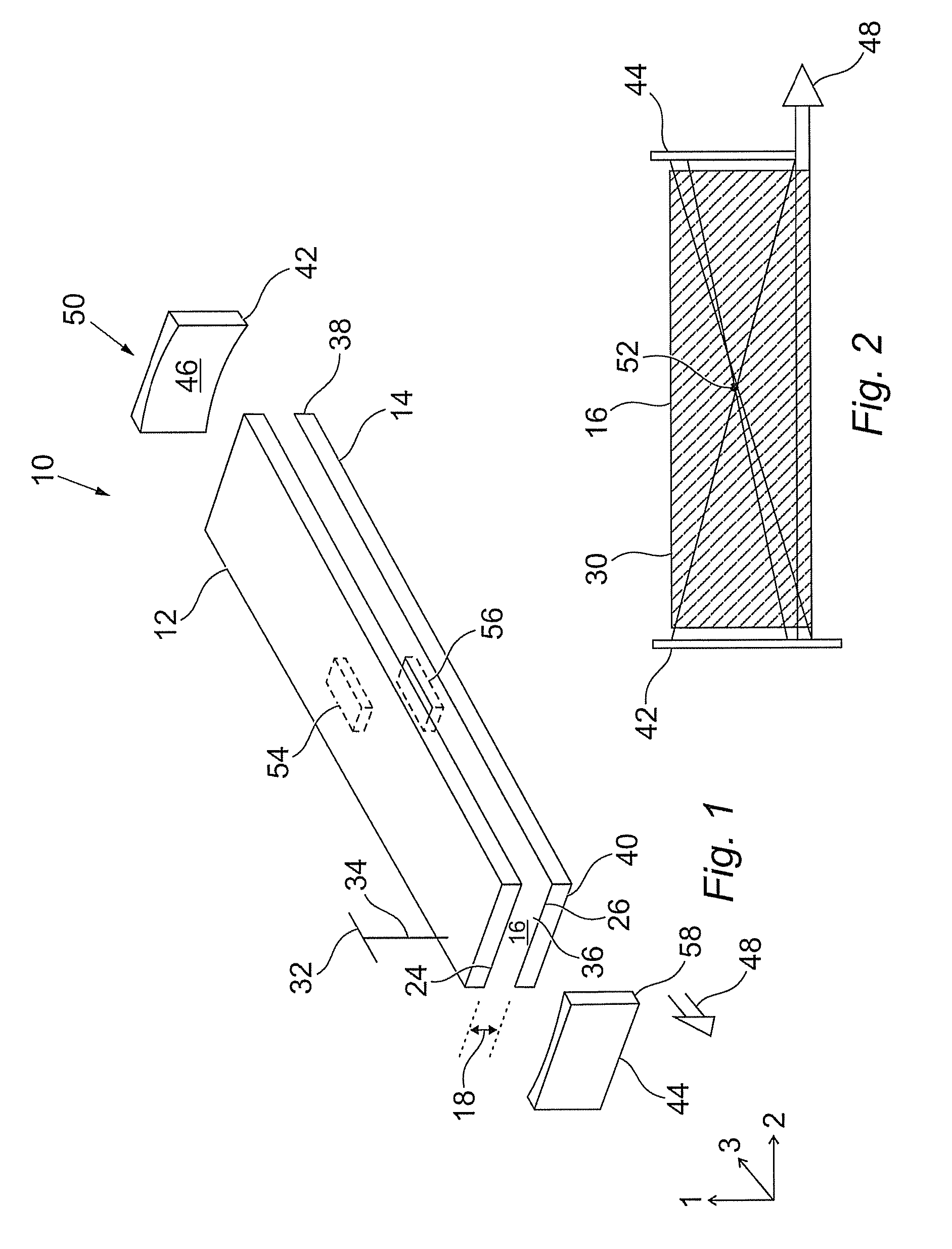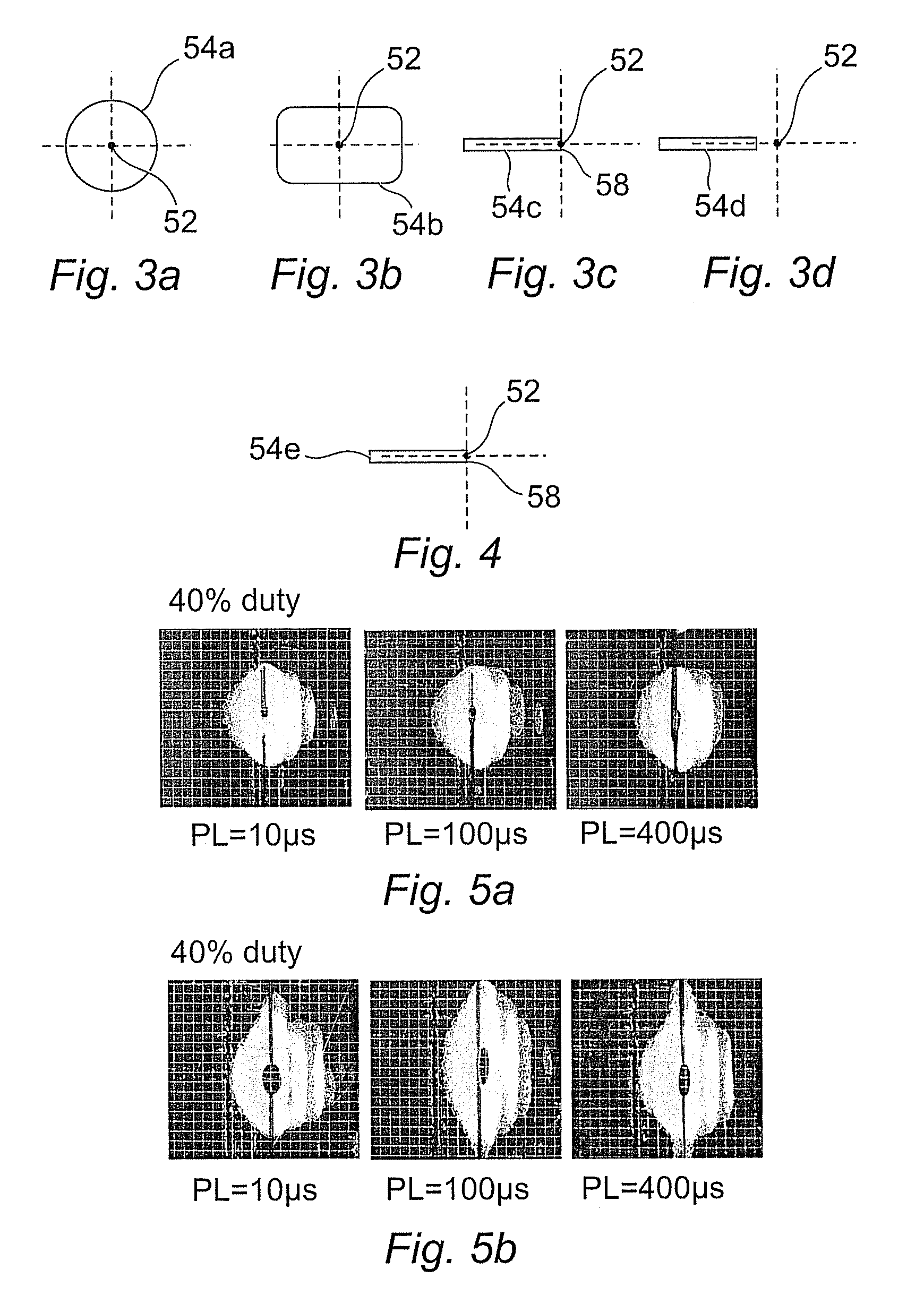Mode selection technique for a laser
- Summary
- Abstract
- Description
- Claims
- Application Information
AI Technical Summary
Benefits of technology
Problems solved by technology
Method used
Image
Examples
Embodiment Construction
[0038]Reference is initially made to FIG. 1 of the drawings which illustrates a mode selective laser, generally indicated by reference numeral 10, according to an embodiment of the present invention. Laser 10 comprises a pair of elongated rectangular planar electrodes 12,14 formed from a conductive metal such as aluminium. The planar dimensions of electrodes 12,14 will determine the size of the discharge region 16, created there between, and consequently the output power of the laser 10. For a 100w laser in CO2 the electrodes could be around 480 mm in length and 45 mm wide. The electrodes 12,14 are typically adapted to include one or more coolant channels (not shown) through which water can flow.
[0039]The electrodes 12,14 are spaced apart by a waveguide height, or inter-electrode gap 18. Typically the gap 18 is 1 mm to 4 mm in height, with a height in the range 1.3 mm to 2.8 mm in a preferred embodiment. The electrodes 12,14 are held apart at the desired height 18.
[0040]The discharg...
PUM
 Login to View More
Login to View More Abstract
Description
Claims
Application Information
 Login to View More
Login to View More - R&D
- Intellectual Property
- Life Sciences
- Materials
- Tech Scout
- Unparalleled Data Quality
- Higher Quality Content
- 60% Fewer Hallucinations
Browse by: Latest US Patents, China's latest patents, Technical Efficacy Thesaurus, Application Domain, Technology Topic, Popular Technical Reports.
© 2025 PatSnap. All rights reserved.Legal|Privacy policy|Modern Slavery Act Transparency Statement|Sitemap|About US| Contact US: help@patsnap.com



